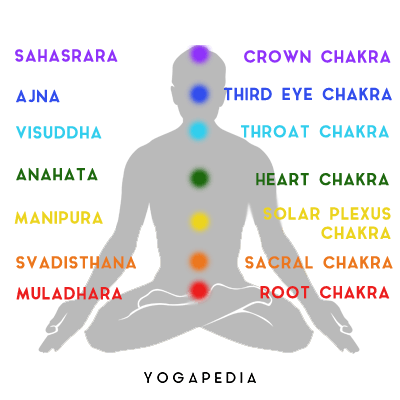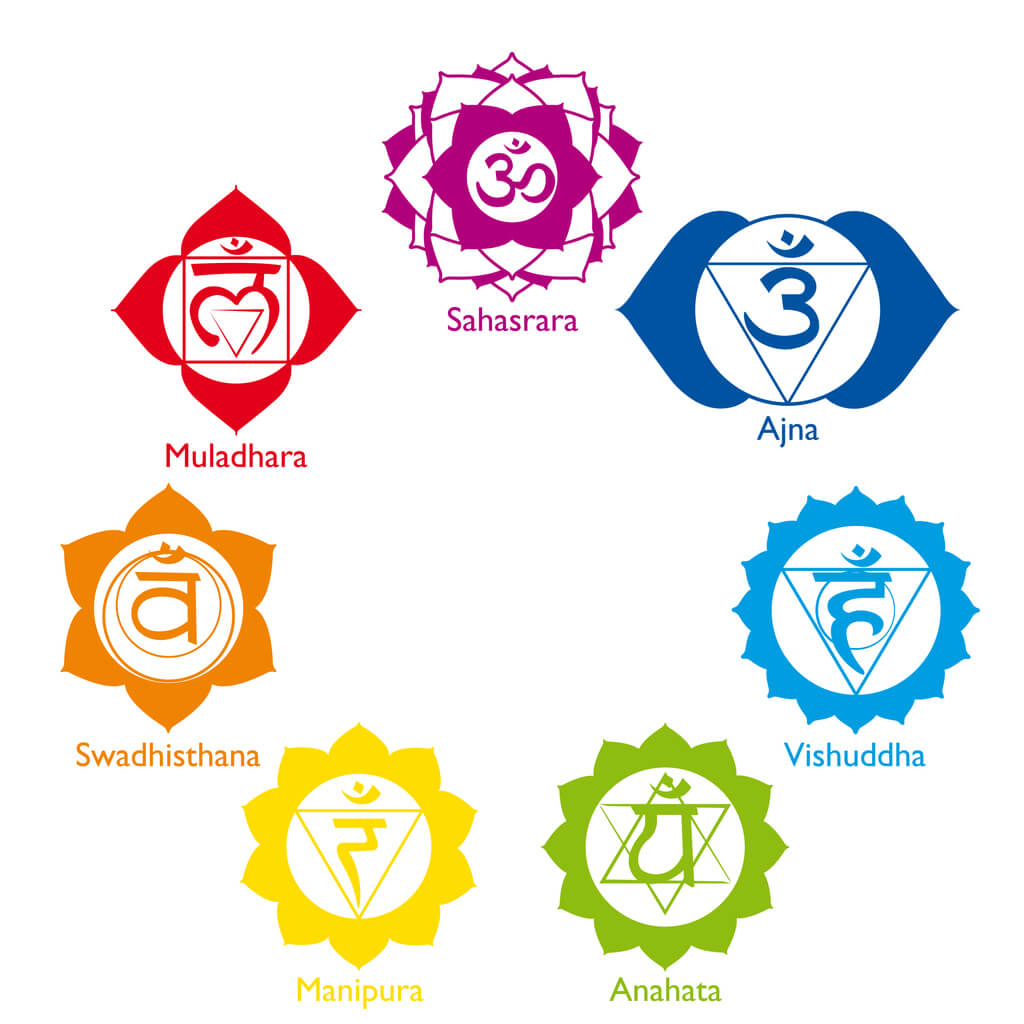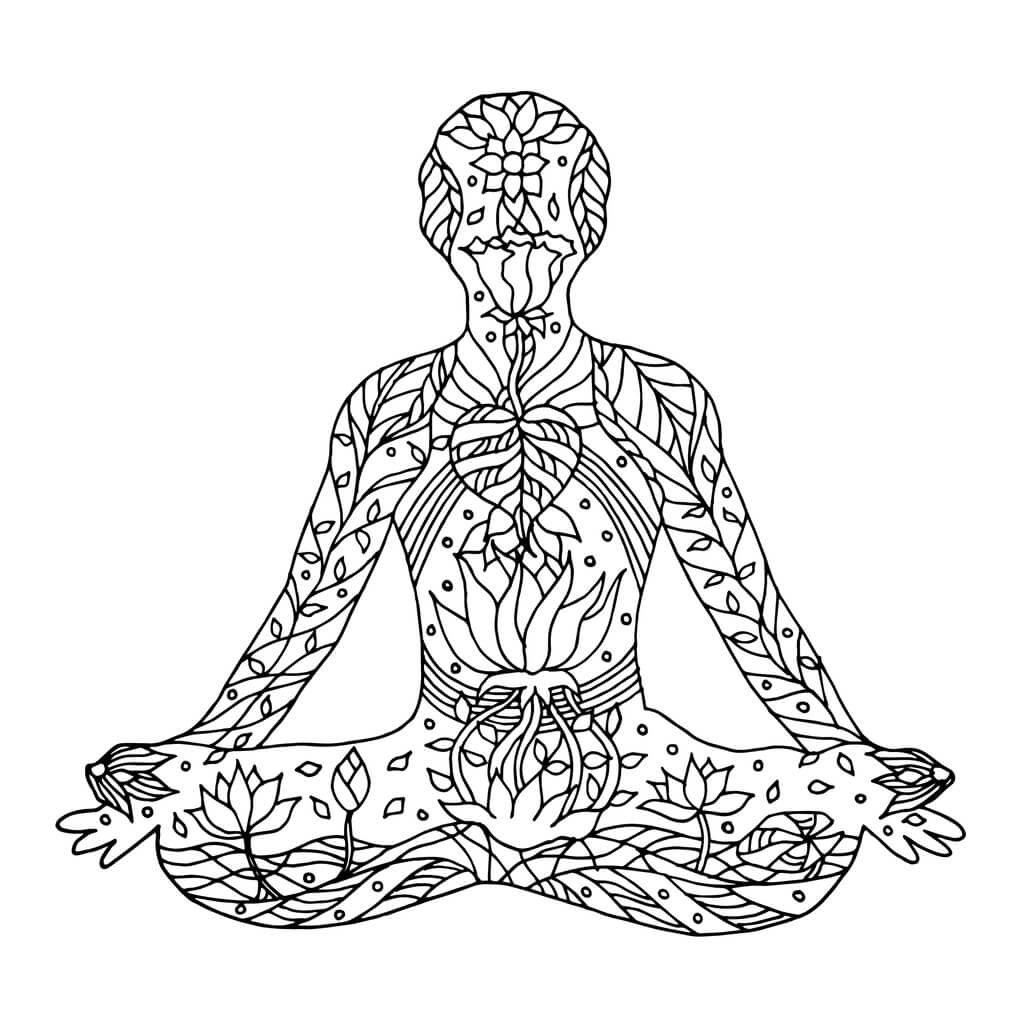Some things are truly beyond our control.
Contact with the divine comes by grace, and all we can do is ready ourselves for it. Unlike athletic and intellectual achievement, we cannot force, will or compel it. We are of the divine, but it does not belong to us, and thus the ways in which we become receptive to the divine are different in character from how we learn shoulder stand or even pranayama.
When our physical and energetic bodies are balanced, we are more receptive to awareness.
The Chakra That Isn’t: Sahasrara
Many systems of description list seven chakras, the seventh being sahasrara at the crown of the head. Arguably, this is a mischaracterization. The six chakras belong to the realm of manifested form. They are expressions of the psyche and karma blended together, and in conjunction with the psyche and karma, the actions of these wheels co-create life as we experience it.
Balancing these six chakras establishes harmony and unveils our capacity to experience samadhi.

The ultimate goal of yoga is said to be union. We could also think of it as re-union, as we are of and created from the divine essence that we seek through yoga. Neither of these are entirely correct, as there is nothing to unite that is not already united — we are never separate or distinct from the divine force.
In sahasrara, also called samadhi or nirvana, one knows the truth that “the experience, the experienced and the experiencer are one and the same,” as Swami Satyananda Saraswati puts it.
We Cannot Balance Sahasrara
Sahasrara is already perfect and complete. Containing nothing, it contains all things. It cannot be described through words, images or concepts, though many try (as we are doing now). There are numerous moving accounts by mystics and seekers of their glimpses of sahasrara.
While the other chakras are the seats of specific aspects of life, sahasrara is beyond all category, conceptualization and description. Yet, those familiar with a variety of religious traditions will recognize it as the core of all spiritual experience and the ultimate in spiritual aspiration.
Each of the chakras is associated with a lotus of a different number of petals. Sahasrara is signified by a lotus with a thousand petals, but that description shouldn’t be taken literally. For most, a thousand petals is beyond what we can visualize, and that is the point.

We cannot reach what is beyond concepts through conceptualization.
Because concepts cannot account for what is beyond conceptualization, no amount of discursive discussion can teach us how to reach sahasrara. We can read and study every spiritual text in the world, memorize them even, and it will do nothing to help.
Only practice can help us reach sahasrara.
By practice, we mean meditative practice. Asana is to strengthen and purify the body and to acquaint us with the implementation of discipline and dispassionate observation. We then bring these valuable tools to our daily awareness and our meditative practice. (Learn more in 6 Techniques to Staying Present.)
Nowhere to go and Nothing to do
We, in the modern age, are great goal-setters, list-makers and box-checkers. Such activities help us to accomplish many feats of achievement, but they are powerless to help us in our search for sahasrara.
Sahasrara is already here. We don’t need to search for it and we can’t find it as it isn’t lost.
What we can do is rediscover our awareness so that we can realize that the ultimate goal of yoga, and consciousness itself, is already here, in every moment.
Who is Doing the Watching?
To experience sahasrara, we need to cultivate an internal quiet. For most of us, our minds are quite chatty, producing and commenting upon a constant string of thoughts. (Learn more in 4 Methods to Mastering Your 'Monkey Mind.')
These thoughts, called vrittis, are disturbances in an otherwise clear and luminous perceptive mind.
Through attachment, the generation of vrittis becomes more extensive and intense.

The yogic notion of detachment is often confused with nihilism, but the two are quite different.
To be detached means that we do not confuse ourselves with our temporary circumstances, including this body and this life. There are significant ways in which we are different from how we were ten years ago, and yet we consider ourselves the same person. (Learn more in Success in Yoga: The Combined Practice of Asana, Meditation and Detachment.)
What is it that remains the same? Our witnessing awareness.
The Witness
The most reliable way I know to develop detachment is to cultivate awareness of our witnessing self. Your witnessing self is an aspect of your existence that is not bound by your pain and suffering, though it sees them. It is not tossed about by your reversals of fortune, though it witnesses them.
Our witnessing awareness is free from attachment and aversion, and contact with our witnessing awareness helps us build space to experience without reacting, to allow the thoughts in our minds to settle and the clear light of awareness to shine through. (Learn more in Exploring Aversions (Dvesha): 3 Ways to Better Handle This Unwanted Feeling.)
Final Thoughts
Everything we do to bring our lives into balance removes the obstacles between us and the experience of samadhi. Balance in the six chakras allows us to engage wholeheartedly in meditative practice, less subject to distraction and to bouts of attachment and aversion.

We cannot force a butterfly to land in our yard, but we can care for it and plant flowers that we know that butterflies like, and sit quietly and wait. And so it is with sahasrara.
During These Times of Stress and Uncertainty Your Doshas May Be Unbalanced.
To help you bring attention to your doshas and to identify what your predominant dosha is, we created the following quiz.
Try not to stress over every question, but simply answer based off your intuition. After all, you know yourself better than anyone else.